The ultimate guide to guitar tabs: how to read tab and symbols explained
Learn to play acoustic and electric guitar with our guide to this easy-to-read notation
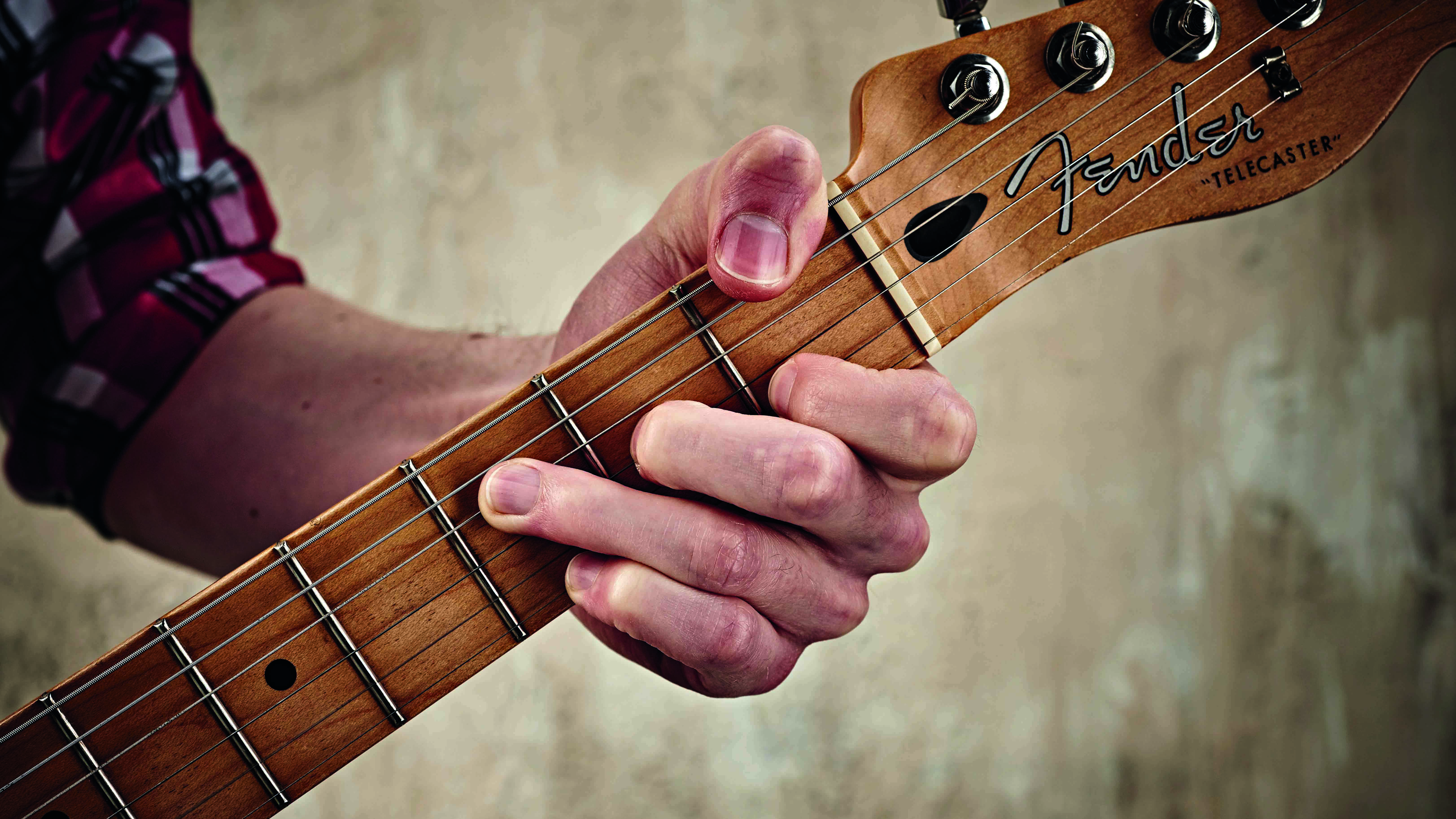
Guitar Tablature explained
Tab is short for tablature, a notational system used to give detailed information as to where notes should be played on the fretboard.
Tab appears underneath conventional music notation as six horizontal lines that represent the strings of the guitar, from the sixth (thick) string at the bottom to the first (thin) string at the top.
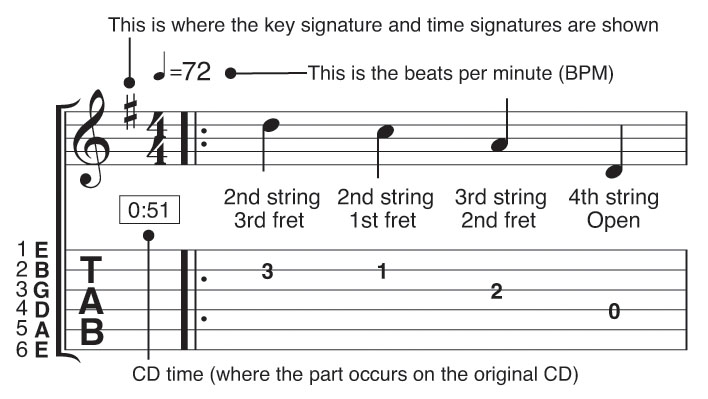
On these lines, numbers represent the frets where you should place your fingers. For example, an A note on the 2nd fret, third string, will be shown as a number ‘2’ on the third line down on the tab. Unfretted strings are shown with a ‘0’.
The key and time signatures are shown in the traditional notation. A timestamp may also tell you where in the original track you’ll find each example. Finally, a tempo marking is expressed in beats per minute.
Once you've got the hang of reading tab, why not try learning a few open-position guitar chords?
Fret boxes: chords, scales and capo notation
Hand labelling

Here are the abbreviations used for each finger. Fretting hand: 1, 2, 3, 4, (T)
Picking hand: p (thumb), i (index), m (middle), a (annular), c (little finger)
Want all the hottest music and gear news, reviews, deals, features and more, direct to your inbox? Sign up here.
Nut and fretboard

This fretbox diagram represents the guitar’s fretboard exactly, as seen in the photo. This design is used for ease of visualising a fretboard scale or chord quickly.
Chord example
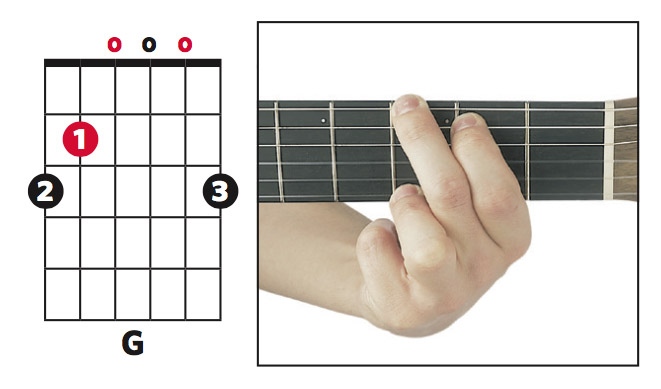
This diagram represents a G chord. The ‘o’s are open strings, and a circled number is a fretting hand finger. A black ‘o’ or circled number is the root note (here, G).
Capo example
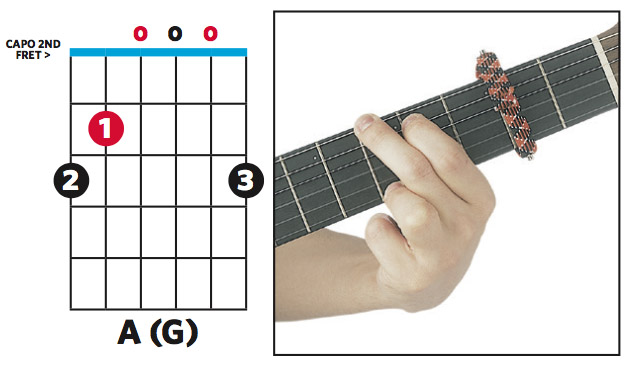
The blue line in the diagram represents a capo - for this A chord, place it at the 2nd fret. Capos change the fret number ordering. Here, the original 5th fret now becomes the 3rd fret, 7th fret now 5th fret, etc.
Capo notation

Here, the chord looks like a C in the tab, but the capo on the 2nd fret raises the pitch to make it a D. The 2nd fret capo’d notes are shown with a ‘0’ in the tab as if they were open strings.
Scale example

The fret box diagram illustrates the fret hand fingering for the A major scale using black dots for root notes and red dots for other scale tones. The photo shows part of the scale being played on the fourth string with the first, third and fourth fingers.
Guitar techniques: Picking
Down and up-picking
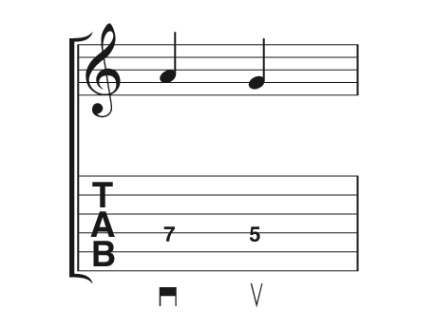
The symbols under the tab tell you the first note is to be down-picked and the second note is to be up-picked.
Tremolo picking
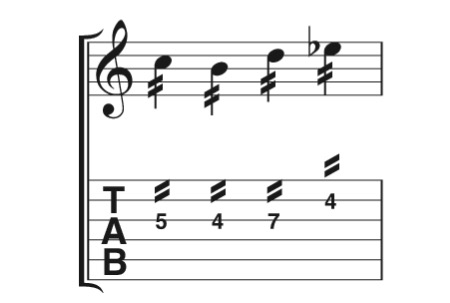
Each of the four notes are to be alternate-picked (down- and up-picked) very rapidly and continuously.
Palm muting
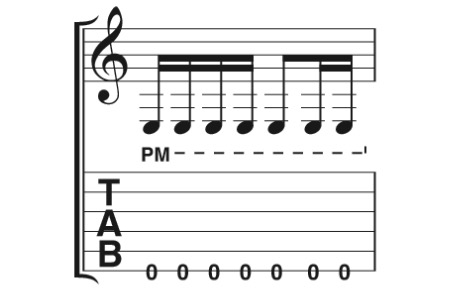
Palm-mute by resting the edge of your picking hand palm on the strings near the bridge saddles.
Pick rake

Drag the pick across the strings shown with a single sweep. This is often used to augment a rake’s last note.
Arpeggiated chord

Play the notes of the chord by strumming across the relevant strings in the direction of the arrow head.
Fretting Hand
Hammer-on & pull-off
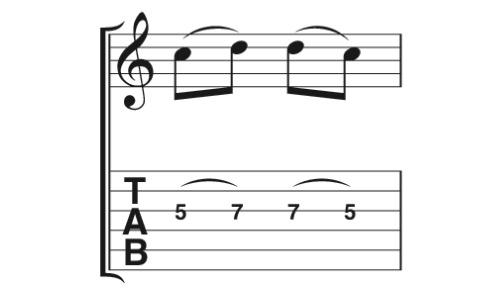
Pick the first note then hammer down on the string for the second note. Pick the third note and pull-off for the fourth note.
Note trills

After picking the first note, rapidly alternate between the two notes shown in brackets using hammer-ons and pull-offs.
Slides (glissando)
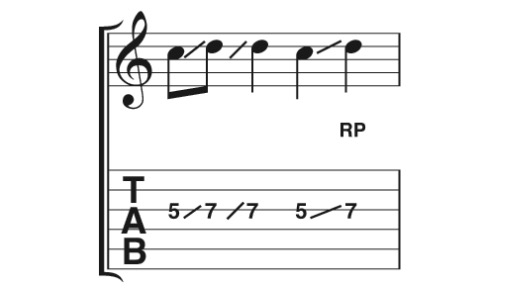
Pick the first note and then slide to the next. For the last two notes pick the first, slide to the next and then re-pick it (RP).
Fret-hand tapping
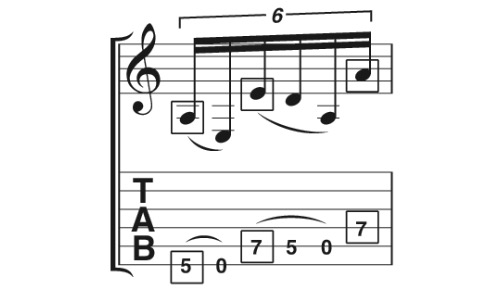
Sound the notes marked with a square by hammering-on/tapping with your fret-hand fingers, instead of picking.
Fret-hand muting
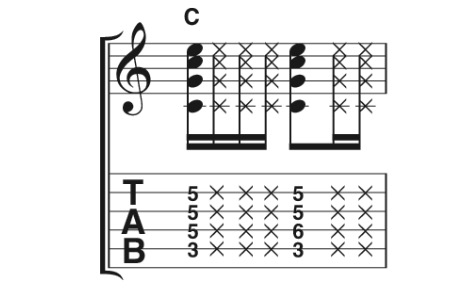
X markings represent notes and strings that are muted by your fret hand when struck by your picking hand.
Bending and vibrato
Bend and release

Fret the first note (here, the 5th fret) and bend up to the pitch of the bracketed note, before releasing again.
Re-picked bend
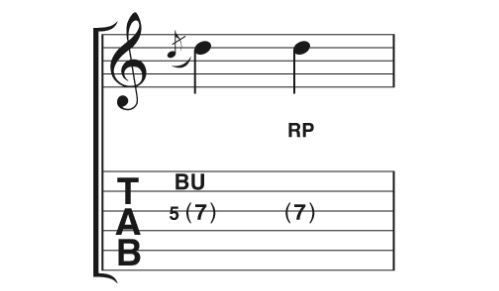
Bend up to the pitch shown in the brackets, then re-pick the note while holding the bent note at the pitch shown.
Pre-bend
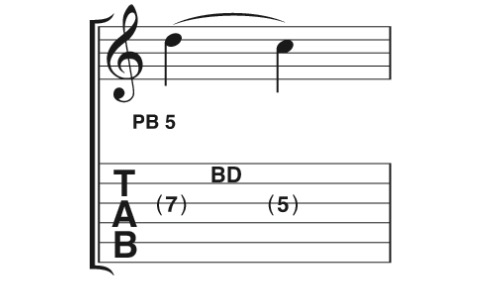
Silently bend the string up from the 5th fret (PB5) to the pitch of the 7th fret note, pick it and release to the 5th fret note.
Quarter-tone bend

Pick the note then bend up a quarter-tone (a very small amount). This is sometimes referred to as a ‘blues curl’.
Vibrato

Your fretting hand vibrates the string by small bend-ups and releases. Exaggerate this effect to create a ‘wide’ vibrato.
Harmonics
Natural harmonics
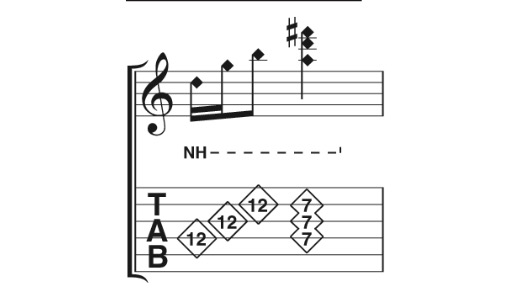
Pick the note while lightly touching the string directly over the fret indicated. A chiming harmonic results.
Artificial harmonics
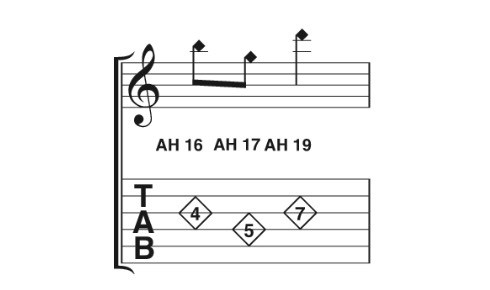
Fret the note as shown, then lightly place your index finger directly over ‘x’ fret (AH ‘x’) and pick (with a pick, p or a).
Pinched harmonics
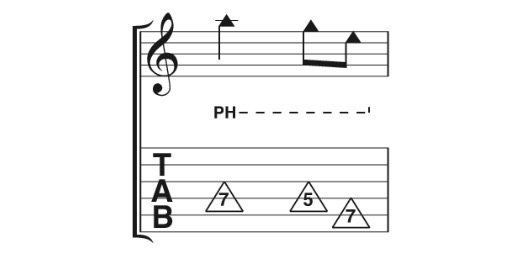
After fretting the note in the triangle, dig into the string with the side of your thumb as you sound it with the pick.
Tapped harmonics
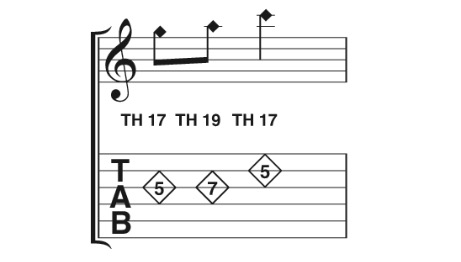
Place your finger on the note as shown, but sound it with a quick pick hand tap at the fret shown (TH17) for a harmonic.
Touched harmonics

A previously sounded note is touched above the fret marked TCH (eg, TCH 9) for it to sound a harmonic.
Vibrato bar/whammy bar
Whammy bar bends

The note is picked as shown, then the vibrato bar is raised and lowered to the pitches shown in brackets.
Scoop and doop
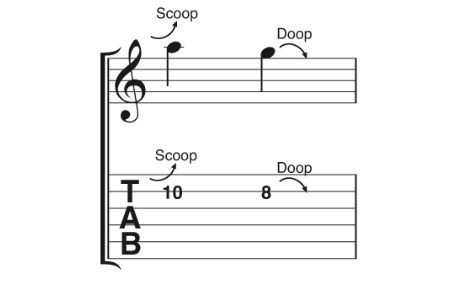
Scoop: depress the bar just before striking the note and release. Doop: lower the bar slightly after picking note.
Sustained note and divebomb

A note is sustained then the vibrato bar is depressed to slack. The square bracket indicates a further articulation.
Gargle
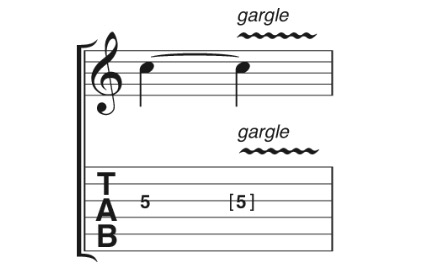
Sound the note and ‘flick’ the vibrato bar with your picking hand so it ‘quivers’. This results in a ‘gargling’ sound!
Whammy bar vibrato
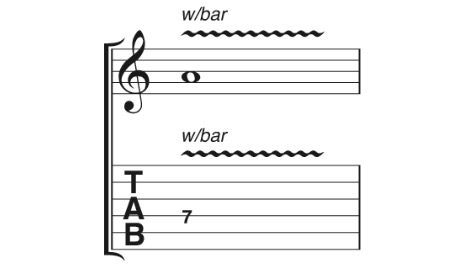
Gently rock the whammy bar to repeatedly bend the pitch up and down. This sounds similar to fret hand vibrato.
Others
Pick scrape
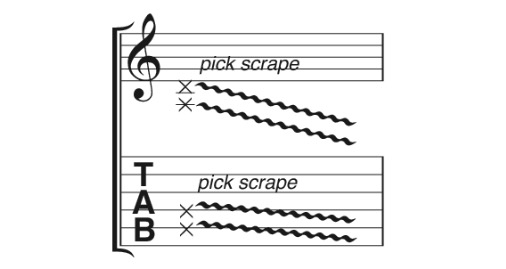
The edge of the pick is dragged either down or up along the lower strings to produce a scraped sound.
Violining
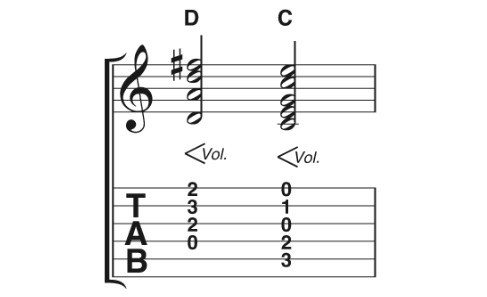
Turn the volume control down, sound the note(s) and then turn the volume up for a smooth fade in.
Finger numbering
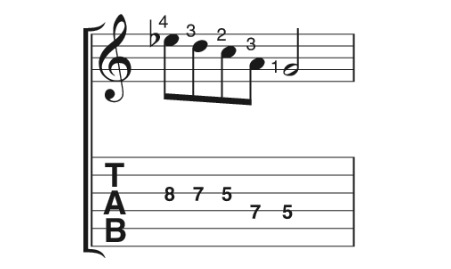
The numbers in the traditional notation refer to the fingers required to play each note.
pima directions
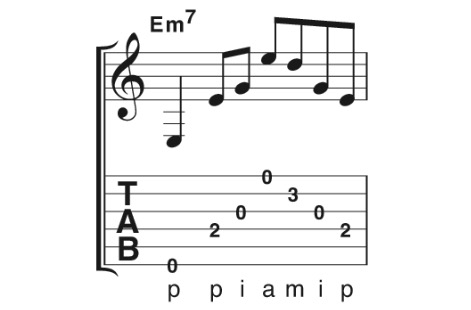
Any kind of fingerpicking requirements are shown at the bottom of the tab notation.
Pick-hand tapping
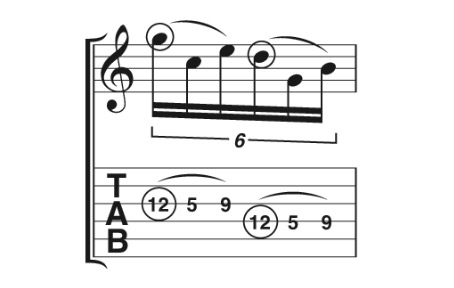
Tap (hammer-on) with a finger of your picking hand onto the fret marked with a circle. Usually with ‘i’ or ‘m’.
Now you've got the hang of reading tab, try learning a few open-position guitar chords.
MusicRadar is the number one website for music-makers of all kinds, be they guitarists, drummers, keyboard players, DJs or producers...
- GEAR: We help musicians find the best gear with top-ranking gear round-ups and high-quality, authoritative reviews by a wide team of highly experienced experts.
- TIPS: We also provide tuition, from bite-sized tips to advanced work-outs and guidance from recognised musicians and stars.
- STARS: We talk to musicians and stars about their creative processes, and the nuts and bolts of their gear and technique. We give fans an insight into the craft of music-making that no other music website can.
